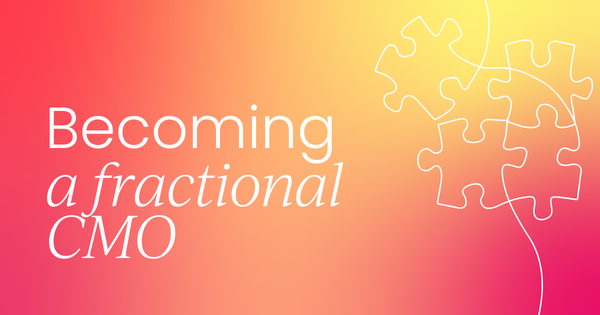Companies, especially startups and small to mid-sized businesses, are always on the lookout for smart ways to get senior-level expertise without the full-time cost.
That's where the fractional CMO comes in.
If you're a seasoned marketing leader who’s looking to shake things up, take control of your schedule, and work with a variety of companies, you're probably wondering how to become a fractional CMO.
What is a fractional CMO?
A fractional CMO is a highly experienced marketing executive who works part-time or on a contract basis with multiple companies at once.
They don’t commit to one employer full-time but, instead, bring their strategic expertise to several clients, often startups or SMEs who might not need a full-time CMO.
Why are fractional CMOs in demand?
A Chief Outsiders survey found that “attitudes are becoming more positive towards fractional CMOs as 73% of respondents said that fractional CMOs are becoming ever more accepted by the C-suite.”
After all, companies want access to senior talent without having to pay a six-figure salary. Fractional CMOs solve that problem.
As a fractional CMO, you’ll guide brand strategy, lead marketing teams, manage agency relations, and drive growth (in fact, according to Harvard Business Review research, orgs engaging fractional CMOs saw 29% revenue growth, compared to 19% for companies without them) – all on your flexible terms.
Because orgs are becoming leaner but still want results, this role is becoming more and more popular.
Beyond their cost-effectiveness, fractional CMOs can also deliver immediate impact, since they’re ready to hit the ground running and don’t need months of onboarding.
They’re also sought after during periods of transition for companies, such as growth, restructuring, and funding, where temporary leadership is required – as a fractional CMO, you’d guide the company while it searches for a permanent hire or builds out a marketing team.
The role also implies vast experience across industries. Fractional CMOs tend to work with many different people and in different markets, so they’ll bring with them experience that’s difficult to replicate.
Skills needed to become a fractional CMO
“There is no longer a full-stack CMO. Some are great at Lead Gen, others at Brand Strategy, but there's no CMO who's absolutely great at all the elements of marketing today. There are times when a company who's really, really strong in one area needs expertise in a different area.
“But do they hire another vice president of marketing just for that work? Or can they bring in someone who has that passion and they get to do the part that they love, while they are only paying for that highest value element.” – Art Saxby, CEO of Chief Outsiders
Not everyone is cut out to be a fractional CMO. To succeed in this role, you need more than a resume full of marketing campaigns and job titles. It’s crucial to think like a business leader, not just a marketer.
Strong candidates typically have 10+ years of experience, ideally at the director or VP level or above. They tend to be fluent in go-to-market strategy, customer segmentation, demand generation, brand building, product marketing, team leadership, budgeting, and analytics.
You don’t have to execute all of these things, but you should know how to do them in order to lead the teams who do.
But beyond the skillset, you also need the mindset. Fractional work means you have to manage your own pipeline, juggle multiple clients, set boundaries, and build your own reputation.
So, some of the skills you need to become a fractional CMO include:
Strategic thinking
It goes without saying that a fractional CMO should be a strategic leader, since they’re not just executing campaigns, but also setting the marketing vision.
This means you should be able to:
- Position the brand in the market
- Create powerful go-to-market strategies
- Know how to allocate resources effectively
For example, if the startup you work for wants to rework their brand strategy, you may have to assess their ICP, refine their messaging, and look at demand generation channels.
Analytical skills
Great fractional CMOs don’t just follow a feeling or go with their gut – they look at metrics and data to guide their decisions.
So, you must be able to, among other things:
- Analyze funnels to understand where leads are dropping off and why
- Study the performance of your channels, such as calculating ROI from paid social vs email
- Know how to attribute traffic and sales (there are many tools you can use for that)
For instance, if your customer acquisition cost is too high, you might have to cut inefficiency and spend, and double down on other strategies.
Cross-functional leadership
As a fractional CMO, you must have great communication skills, as well as the ability to align marketing with other teams, including sales.
It’s important you:
- Collaborate with sales leaders to ensure marketing-qualified leads turn into revenue
- Work with product to shape messaging around features that people actually care about
- Present data and plans to CEOs and other stakeholders
So, if you identify that sales isn’t using updated pitch decks, it’s your job to develop enablement assets and train the team so that conversion rates go up.

Channel expertise
Fractional CMOs are expected to bring real marketing depth, which means knowing how to choose and optimize the right channels.
For B2B, this means content marketing, ABM, LinkedIn ads, email, etc., and for B2C, it means paid media, influencer campaigns, user-generated content, and more.
For example, imagine one of the companies you work with is relying too heavily on paid ads – you might recommend building a scalable organic content strategy to reduce customer acquisition cost over time instead.
Adaptability
Another obvious skill, but it should still be mentioned as you’ll be required to juggle multiple clients at once who have different products, audiences, growth goals, team dynamics, etc.
Flexibility is a must, so you’ll have to:
- Onboard quickly and start adding value in week one
- Prioritize your time since you won’t have 40 hours a week per client
- Be able to switch from ecommerce in the morning to B2B in the afternoon
After all, one org might need strategic planning while another might want you to fix their lead gen funnel, so you must be able to switch hats very quickly.
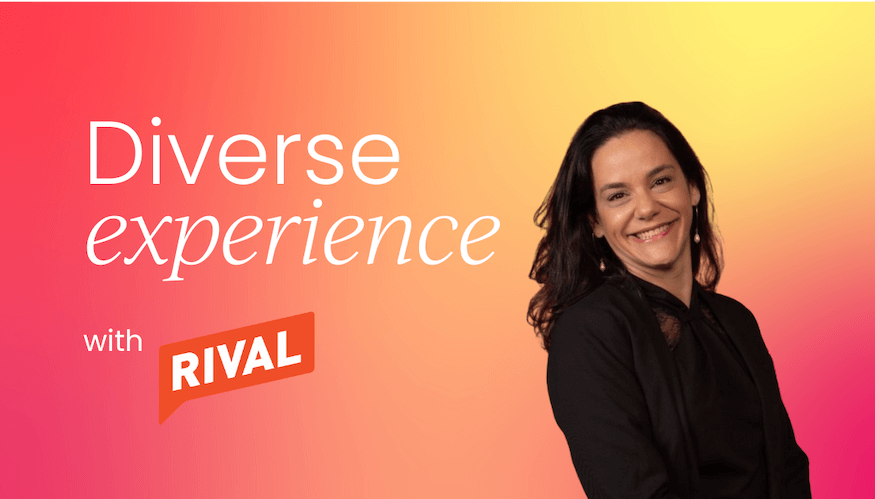
Hands-on execution
While you’ll mainly be leading people and setting strategy, you may also have to do things like:
- Writing marketing emails and landing page copy
- Building CRM workflows and segmentation logic
- Setting up paid campaigns and managing freelancers
Imagine one of your clients had their only marketer quit – until they find a replacement, you have to step up to keep campaigns running and onboard the new hire.
Client management
Because fractional CMOs often work as consultants, you need strong freelance business skills, as mentioned.
This means:
- Being able to write clear scopes of work and proposals
- Bring upfront about what can be achieved with the client’s time and budget
- Manage referrals and renewals
For example, if a client requests weekly reporting and daily meetings, this would take up all of your time. So, you must be able to renegotiate terms and set expectations in a professional manner.
How to become a fractional CMO
If you’re ready to make the leap, here’s a breakdown on how to become a fractional CMO, one actionable step at a time.
1. Have deep marketing expertise
Without a strong foundation, it's hard for you, as a fractional CMO, to ask for premium rates or land strategic roles.
This means you should have worked on multiple functions, from brand marketing and demand generation to content marketing and performance.
Titles like Head of Marketing, Marketing Director, or CMO show you can lead strategy, not just execute – and you should have led or be able to lead GTM launches, rebranding efforts, and scaling.
2. Clarify your value proposition
First, figure out what kind of fractional CMO you want to be.
What are your strengths? What industries or company stages do you know best? Do you specialize in B2B SaaS, ecommerce, fintech, or consumer brands? Are you great at building marketing functions from scratch or fixing what’s broken?
You’re not just offering “marketing help”, you’re selling a solution. That means your positioning is everything.
And your messaging needs to be clear, bold, and specific. Instead of saying “I help companies grow,” say something like “I help Series A SaaS startups build scalable marketing functions and hit their next funding milestone”.
3. Create your offer
Clients don’t want confusion, so make it as easy for them as possible to see what you’re offering – focus on what they’re going to get from you and how much it’ll cost them.
So, define your delivery model:
- Retainer (e.g., 10-20 hrs/week for $5k-$15k/month)
- Paid by project (e.g., $10,000-$50,000)
- Hourly rate (e.g., $200-$500 per hour)
- Equity plus cash (e.g., $3,000-$8,000/month + 0.25%-1.5% equity)
Many successful contractors go with monthly retainers, since this provides predictable income and helps build deeper client relationships.
You can also consider a tiered offering. For example, a “starter” package for earlier-stage companies (e.g., 10 hours a month of strategic oversight) and “growth” package for more support (such as leading the whole marketing function part-time).
Create a one-pager you can share with potential clients that outlines your services, scope, pricing, and process.
4. Build your personal brand
You’re selling expertise and trust, so people need to believe in you before they buy your services. So, you should have a visible online presence that backs up your expertise and drives leads.
For example, you can build a brand on LinkedIn by posting 2x or 3x times a week (your insights, lessons learned, frameworks, hot takes), engage with company founders and marketers in your niche, and keep your profile updated to reflect your fractional role.
Of course, make sure you also have a landing page or portfolio with what you do, testimonials, and contact – and, if possible, add case studies with real results and metrics.
Thought leadership is also important, so write articles, guest on podcasts, and speak at industry events.

5. Start getting clients
Landing your first few clients should be your next step, so activate your network by reaching out personally to people you know (former coworkers, founders, investors), letting them know you’re taking on clients, and asking them to refer you or share your posts.
You can also do direct outreach by messaging people on LinkedIn or emailing startups that you notice have poor/underperforming marketing. Personalize every message by mentioning people’s company state or product.
Join founder communities where your clients hang out – Slack groups, early-stage accelerators, Substacks, BlueSky, etc.
And you can also join platforms that help you connect to clients, such as MarketerHire and Toptal.
6. Set up systems
As a fractional CMO, you’re your own ops team. So, having a system in place keeps you organized and stops you from burning out.
This means setting up:
- A client onboarding process (kickoff call template, intake form for goals and metrics).
- A proposal and contract template (defining scope, responsibilities, billing, and exit terms).
- Time tracking and reporting (tools like Clockify to help you log hours and monthly check-in decks).
- Branded documentation and platforms like Calendly to help you organise your appointments.
The point of this is to have a repeatable process for onboarding and delivering results.
7. Focus on high-impact work, not task management
As a fractional CMO, your role usually doesn’t involve running paid social campaigns or writing landing page copy, apart from circumstances we already mentioned.
You’re not the executor, you’re the strategist. You set direction, make key decisions, build frameworks, and drive growth – then you guide in-house teams or agencies to execute.
Focus on this instead of spending your time doing work better suited for a marketing manager. Stay strategic: market positioning, demand generation planning, budget allocation, team structure, and brand architecture.
That’s where your impact and your price tag come from.
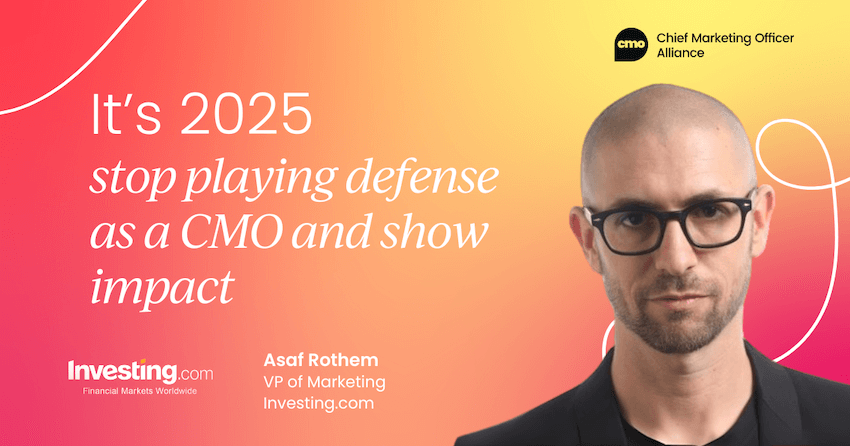
8. Learn to say no
One of the hardest parts about going fractional is turning down work, but this is crucial.
You’re not an agency or a freelancer chasing volume, as your goal is to work deeply and effectively with a few great clients who pay well (not everyone with a marketing problem and a budget).
If a client doesn’t respect your time, scope, or expertise, walk away. If the fit’s not right, say so without guilt.
Protecting your time and focus lets you deliver real results and build a reputation that drives referrals and repeat business.
9. Optimize and scale
Once you’re booked, you want to work smarter, so audit your services quarterly:
- How many hours you’re willing to work
- The revenue you want to get per client
- Raise rates for new clients
- Document your frameworks and reuse them across clients
- Build a referral pipeline (ask for intros from happy clients)
You should also keep evolving. After all, marketing moves fast, algorithms change, AI shakes things up… So, invest in continuous learning, read industry newsletters, listen to marketing podcasts, attend events, and, above all, stay close to the problems your clients are facing.
Mistakes to avoid when starting as a fractional CMO
Some of the most common mistakes people make when starting out as a fractional CMO include:
- Underpricing your work. You’re not just a freelancer, you’re a C-level operator.
- Overselling execution. Make sure you can deliver on what you offer and stay focused on high-level impact.
- Saying yes to every opportunity. That will lead to burnout or damage your reputation.
- Jumping in without clear scope. Don’t try to do everything; set boundaries early, and clarify your KPIs and responsibilities in writing.
- Not tracking or documenting results. You should always do this, whether it’s revenue growth, customer acquisition cost reduction, or improved brand metrics. Both your current and future customers want proof of what you can achieve.
- Neglecting alignment with founders. Don’t drive marketing strategies that aren’t synched with the vision leadership has. Schedule weekly or biweekly check-ins with them to ensure you’re on the right track and tie your marketing recommendations to business outcomes.
- Trying to scale too fast. Avoid introducing tools or strategies the company isn't ready for by prioritizing foundational work and asking yourself: “What does the company need now, not 6 months from now?”
- Forgetting to market yourself. Don’t focus so much on your clients that you neglect your personal brand. Keep on sharing your learning, behind-the-scenes moments, documenting wins, and building a repeatable referral system.
In short
Becoming a fractional gives you freedom, control, variety, and the chance to make a bigger impact across multiple businesses. So, if you’re ready to lead from the front, help founders build, and earn on your own terms, now’s the time.
Join our Slack channel to connect with top-level marketers, from traditional CMOs, managers and directors to fractional CMOs and everything in between.
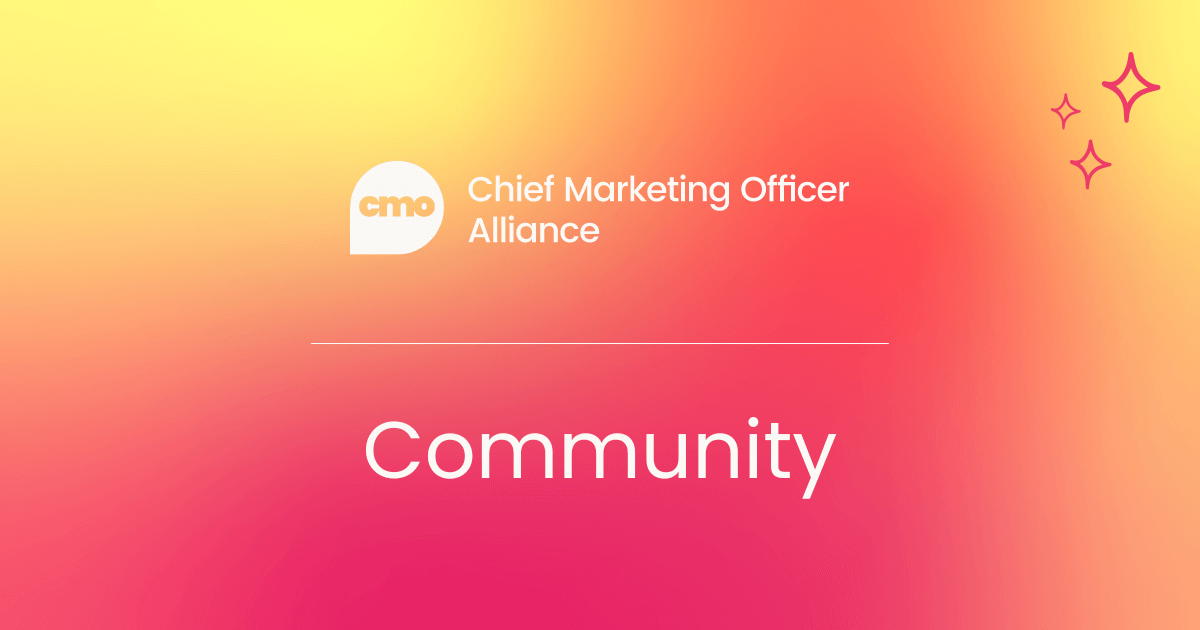






.png)



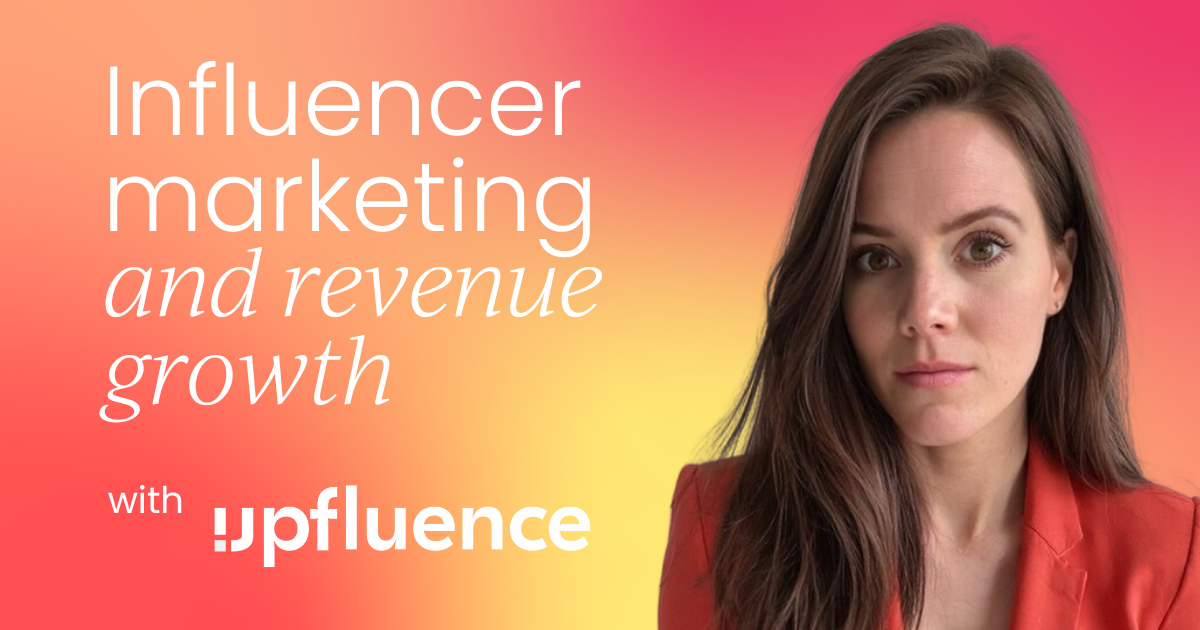





 Follow us on LinkedIn
Follow us on LinkedIn






